Text
Butiki Tea's Organic Dragon Well Notes



Long flat green leaves, that have a toasty grassy scent.
8oz/180F/2:30min
I like green teas you can steep more than once. This is a good tea for that. The scent of the steeped leaves is very grassy and creamy. It have a very smooth vegetal taste thats slightly toasty. The aftertaste is sweet and lasts for a while. As my cup cools the astringency is going up and playing nice with the sweet.
I highly recommend this tea and anything from Butiki!
1 note
·
View note
Text
Learning Japanese Part III
Alright, so I'm finally updating this. I've been really busy with school lately. Better late than never, I suppose. In the very little time I've had to study I've managed to learn how to say "It is something." and how to ask if something is what you think it is... For instance: It is water. It is tea. To do this all you have to do is add です after the noun. The sentence structure is different in Japanese than in English. So instead of saying “It is water.” you say “Water, it is.”.... kind of like Yoda. ;P Also: Is this water? Is this tea? This is just as simple as adding か to the end of です so it becomes ですか. So saying “Water ですか?” is the equivalent to “Is it water?”
Lastly we can say:
It is not water.
We do this by using じゃありません. So "Water じゃありません." means "It is not water." Just by tacking じゃありません after our noun we can make it a negative noun.
Easy-peasy stuff.
0 notes
Text
Verdant Tea's 2003 Farmer's Cooperative (Mt. Banzhang) Wild Arbor Sheng Notes

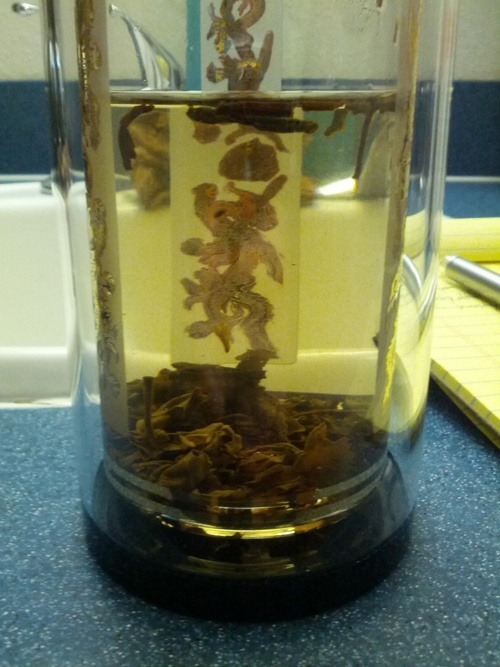
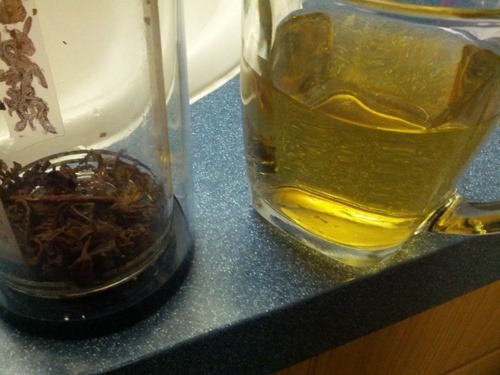
This tea has a very dark brow color and is very twiggy looking. The leaves are all crumbly and folded. It has a musty, earthy, alfalfa scent. The scent reminds me of a old hay loft.
1 Tbsp / 8 oz water / 2 minutes / 208 degrees fahrenheit
Rinsed twice and the leaves started smelling more woodsy and kind of like burning wood.
The liquor from the first steep was a light golden brow color and was very clear. It still had a musty scent and smelled slightly like cedar wood.
This is a very smooth tasting tea. It still has that pu-erh taste to it but its so smooth. It has a smokiness to it. It tastes like drinking a campfire. The aftertaste is a bit peppery tasting.. Never experienced that while drinking tea.
I think next time I brew this I’m going to use a bit more. I think this tea would be better if it was a little stronger, purely my opinion though.
3 notes
·
View notes
Text
Help me learn Japanese
Just leave some contact information in my ask me section. I'll take Skype, email, TeamSpeak, anything really. We can chat in English discuss Japanese, become lifelong pals. All of that great stuff.
Until then, pal.
0 notes
Text
Learning Japanese Part II... and a half
Okay, So I decided to not jump straight into katakana next, instead I'm going to learn more about sentence structure with hiragana. Various sources have told this would be the best route.
So next time I post (hopefully soon) it will be about sentence structure and various things of that nature.
0 notes
Video
youtube
I've been listening to a lot of Japanese music in order to familiarize myself with pronunciation and such. I stumbled over this gem and I can't get it out of my head. I've also started watching the show that this is from: Marumo no Okite. I recommend it.
2 notes
·
View notes
Text
Den's Tea Gyokuro Kin Notes
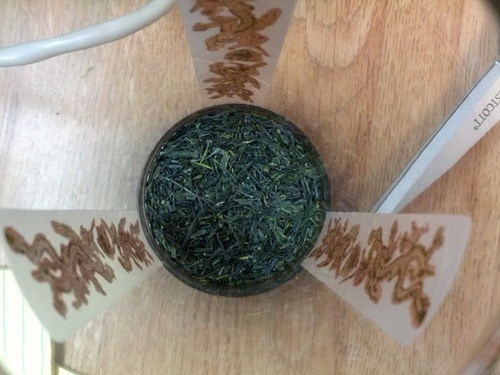


Was really feeling like a green tonight and still had a sample pack of this in the drawer. Gyokuro Kin for me tonight!
The dry leaves are a very dark green color. They smell fresh and grassy. Reminded me a freshly mowed lawn.
Steeped this for 90 seconds at 160 degrees.
The wet leaves expanded quickly and smell really sweet. The grassy smell of this is amazing. The liquor is a murky radioactive green. Looks delicious.
This tastes very buttery and smooth. It is a bit astringent but the sweetness balances it out. Very nice mouth feel. A very savory tea. Spinach and seaweed. Just what the doctor ordered.
4 notes
·
View notes
Text
Butiki Tea's Wild Purple Buds Pu-erh Notes

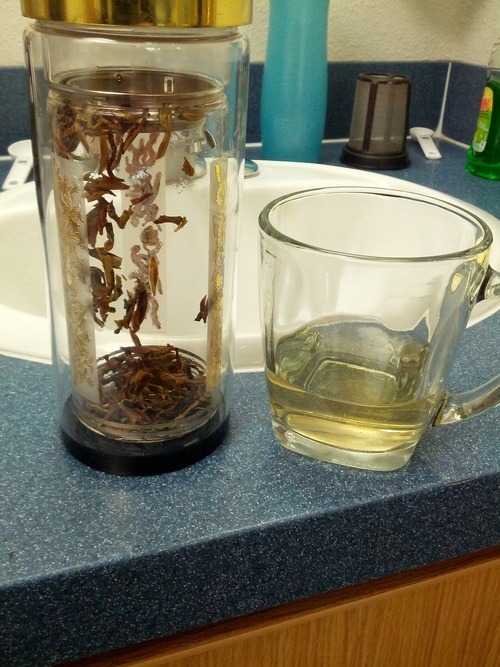
Woot, my first pu-erh!
Interested in seeing how this tastes! The dry leaves smell woody and floral. I can smell the oak smell like Butiki describes as well. I'm going to steep this according to Butiki instructions. 4oz of water, 3-5 seconds, 200-205 degree water.
The wet leaves smell very smokey and earthy. Like wood and alfalfa and sweet flowers and honey. This tea tastes a lot like it smells. There is a strong smokiness and earthy flavor. The heavy flavor is opposite the light mouth feel. Every drink makes my mouth feel juicy and wet. Avery interesting tea.
I'm on my 5th infusion and the taste and smell is remaining pretty consistent. There is a sweetness coming out that wasn't there before. Still incredibly smooth and delicious.
9th infusion and still going strong. Butiki says you can get 20+ steeping out of this and I plan on it.
Cheers.
0 notes
Video
youtube
Very good movie, just hard to get through. Sad.
0 notes
Text
Learning Japanese Part II
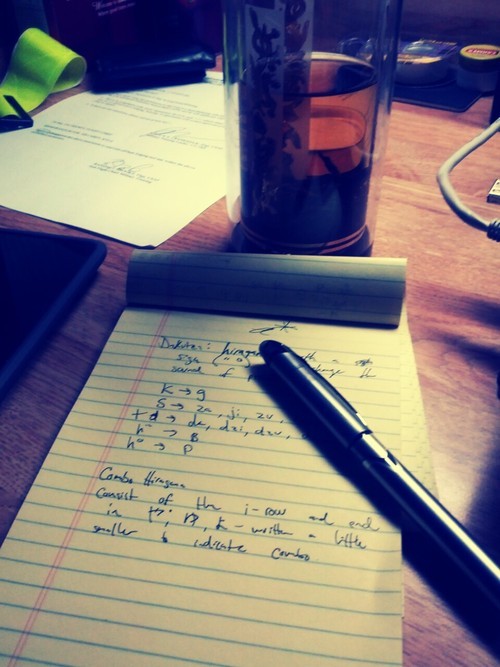
Finally making myself update my learning log. This one is going to be all about hiragana.
I've chose to self teach myself Japanese so I've been all over the internet looking up guides and the best ways to get started. From what I've read most children in Japan usually learn hiragana before anything else. I'm going to treat myself like a small child in Japan. Ha.
For the last week I've been committing the 46 hiragana kana and their associated sounds to memory, as well as the dakuten and combination hiragana. I'm going to go over each kana and the sounds they are associated with. Hopefully I won't have to reference any study material while writing this.
P.S.
This is not a guide of any sort to use to learn Japanese. It is a learning tool. I am not trying to teach anything about Japanese to anyone other than myself.
Guess I'll get started.
There are five vowel hiragana.
あ - makes an "a" sound; car.
い - makes an "i" sound; like the e in "me".
う - makes an "u" sound; "ooh" like you're watching fireworks.
え - makes an "e" sound; "eh" like you're unsastisfied.
お - makes an "o" sound; this is more like "OH", like you just got surprised.
The rest of the hiragana kana will utilizes these vowels and a consonant to create different sounds.
First is the k-row.
か - ka
き - ki
く- ku
け - ke
こ - ko
The s-row.
さ - sa
し - shi - this hiragana kana is an exception to the consonant + vowel rule. There are a few others as well. Pronouce this like "she"
す - su
せ - se
そ - so
The t-row.
た - ta
ち - chi - another exception. Pronounced like "chicks".
つ - tsu - yet another exception. Pronounced like "tsunami".
て - te
と - to
The h-row.
は - ha
ひ - hi
ふ - fu - Pronounced like "food".
へ - he
ほ - ho
The n-row.
な - na
に - ni
ぬ - nu
ね - ne
の - no
The m-row.
ま - ma
み - mi
む - mu
め - me
も - mo
The r-row.
ら - ra
り - ri
る - ru
れ - re
ろ - ro
The y-row.
や - ya
ゆ - yu
よ - yo
There is no "yi" or "ye".
The w-row.
わ - wa
ん - n - Pronounced like "nnn".
を - wo - Pronounced like "oh".
These are the basic 46 hiragana that make up the majority of the sounds in Japanese. Next I'm going to go over the dakuten which is small sign (either ゛ or ゜) added to an existing row that changes the sound of the kana.
When you add a ゛ to any kana in the k-row it will produce a "g" sound.
が - ga
ぎ- gi
ぐ - gu
げ - ge
ご - go
When you add a ゛ to any kana in the s-row it will produce a "z" sound.
ざ - za
じ - ji - An exception like above.
ず - zu
ぜ - ze
ぞ - zo
When you add a ゛ to any kana in the t-row it will produce a "d" sound.
だ - da
ぢ - dzi
づ - dzu
で - de
ど - do
When you add a ゛ to any kana in the h-row it will produce a "b" sound.
ば - ba
び - bi
ぶ - bu
べ - be
ぼ - bo
When you add a ゜ to any kana in the h-row it will produce a "p" sound. The accent mark for these dakuten is actually a little circle. It doesn't look so much like that on here.
ぱ - pa
ぴ - pi
ぷ - pu
ぺ - pe
ぽ - po
This wraps up all the dakuten. The last thing to cover is combination hiragana. Combination hiragana consist of the i-row and end with either や, ゆ, or よ. やゆよ are a little smaller to indicate it is a combination.
かゃ - kya
かゅ - kyu
かょ - kyo
しゃ - sha
しゅ - shu
しょ - sho
ちゃ - cha
ちゅ - chu
ちょ - cho
にゃ - nya
にゅ - nyu
にょ - nyo
ひゃ - hya
ひゅ - hyu
ひょ - hyo
みゃ- mya
みゅ - myu
みょ - myo
りゃ - rya
りゅ - ryu
りょ - ryo
きゃ - gya
きゅ - gyu
きょ - gyo
じゃ - jya
じゅ - jyu
じょ - jyo
ぢゃ - dzya
ぢゅ - dzyu
ぢょ - dzyo
びゃ - bya
びゅ - byu
びょ - byo
ぴゃ - pya
ぴゅ - pyu
ぴょ - pyo
That's that. I am now going to move onto learning katakana.
Cheers.
9 notes
·
View notes
Text
Butiki Tea's White Whisper Notes
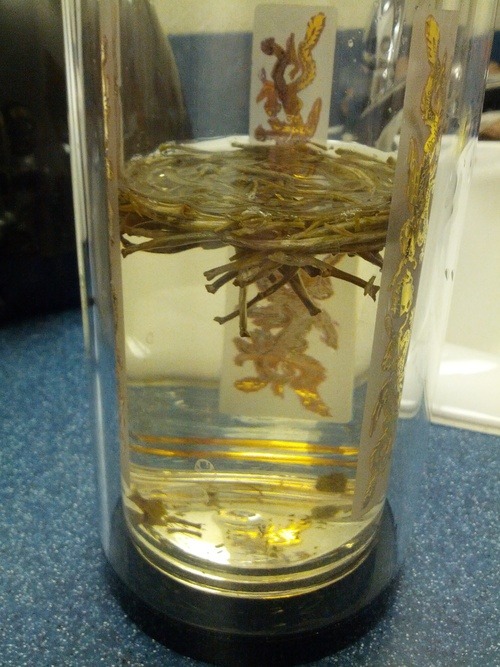
Excited to drink my first white. I was really liking all the light oolongs I’ve been trying lately so I hope this is good!
The dry leaves are a long light green color with silver hair covering the buds. They have a light grassy, floral scent.
Steeping this for three minutes at 165 degrees according to Butiki’s instructions.
It produced a very light shiny golden color liquor. It smells fruity with a very light grassy scent. Smells very good!
This tea has a very light mouth feel. It’s really wet and refreshing to drink. It tastes really sweet and juicy! It has a light peachy flavor, not at all what I was expecting but very good! It’s very light and delicious! I can also see why this is described as buttery!
2nd infusion: This infusion was even sweeter and fruitier tasting than the first! It produced the same flavors as the first infusion but with more intense flavors.
I haven’t noticed much of an aftertaste while drinking this tea which is slightly a bummer because I would to experience the flavors of this tea for as long as possible. Still delicious! Recommended!
3 notes
·
View notes
Text
Butiki Tea's Peach Oolong Notes

Tonight I’m drinking my Peach Oolong sample sent that came along with my Butiki Tea Order.
I’m following Butiki’s steeping instructions and infusing for 4 minutes at 180 degrees.
The small little rolled leaves smell peachy! They colors range from light green to very dark green, and there are a few twiggy stems. I’m also seeing little flower looking things. Hm..
My first infusion came out a very light golden color. Its such a nice color. Its also smells very floral. Almost like a sweet scent. The peach scent has retreated a bit, but still there. Taste time!!!
The first sip I’m going to describe with the word “juicy”. A light, sweet, floral, peachy, MMMMMMMM! Light oolongs are winning me over. This was what I needed all day. I wish I was better at describing flavors because I can’t really give this tea the praise it deserves.
The second infusion was even better because the oolongs flavor started to peek though. Sweeter, better, amazing.
0 notes
Text
Learning Japanese Part I

This is my language learning log for learning Japanese. Writing stuff down helps me retain it more than just reading it and this will also give me an opportunity to be critiqued by anyone who stumbles over this. Here goes nothing.
The first thing I'm studying is the different Japanese syllabaries. There are four:
I. Romaji
II. Hiragana
III. Katakana
IV. Kanji
Romaji
Romaji is essentially Japanese using the Latin alphabet. Some examples of romaji are:
Karate, sensei, sushi, sumo, etc...
From what I've been learning if you want to successful in learning Japanese you need to stay as far away as possible from romaji. It can create bad habits and isn't even used in Japan so whats the point.
Hiragana
Hiragana is the phonetic alphabet of Japanese. Every sound you make while speaking Japanese has a hiragana counterpart. It is a curvy script containing 48 different characters. Hiragana can help you understand the working of Japanese on a deeper level. Hiragana is used for particles in Japanese. Particles are things that connect different things together in a sentence (and, or, etc..). Hirgana is also used when there are kanji characters too difficult to write.
Katakana
Katakana is much more sharp and angular compared to hiragana but the two sets of characters do the exact same thing. Katakana is also comprised of 48 characters and each of the characters make the exact same same sound as they do in hiragana, they are just written differently. So you have to learn the exact same alphabet twice. Katakana has different uses than hiragana though. For instance, if a foreign word needs to be adapted to Japanese you use katakana to spell it out. Katakana is also used for onomatopoeias.
Kanji
Kanji are chinese characters that make up a very large part of Japanese. There are thousands of kanji you need to learn in order to be fluent in Japanese. There is a long history about how kanji are pronounced and how there are many different pronunciations for each one. Kanji is basically the vocabulary for Japanese that make up all the nouns and verbs, from what I understand.
3 notes
·
View notes
Photo
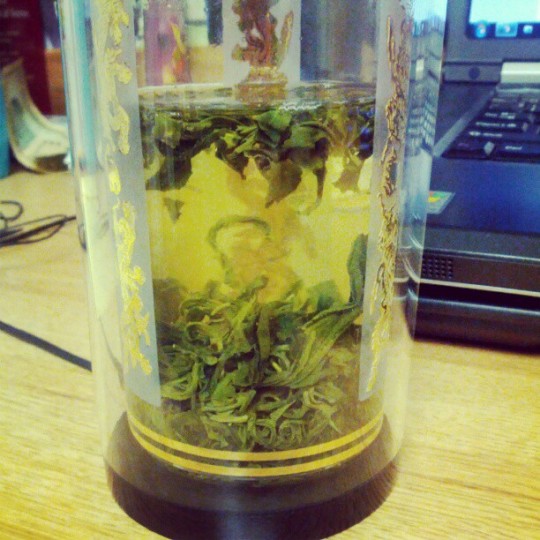
Autumn Harvest Laoshan Green; Laoshan Style
1 note
·
View note

